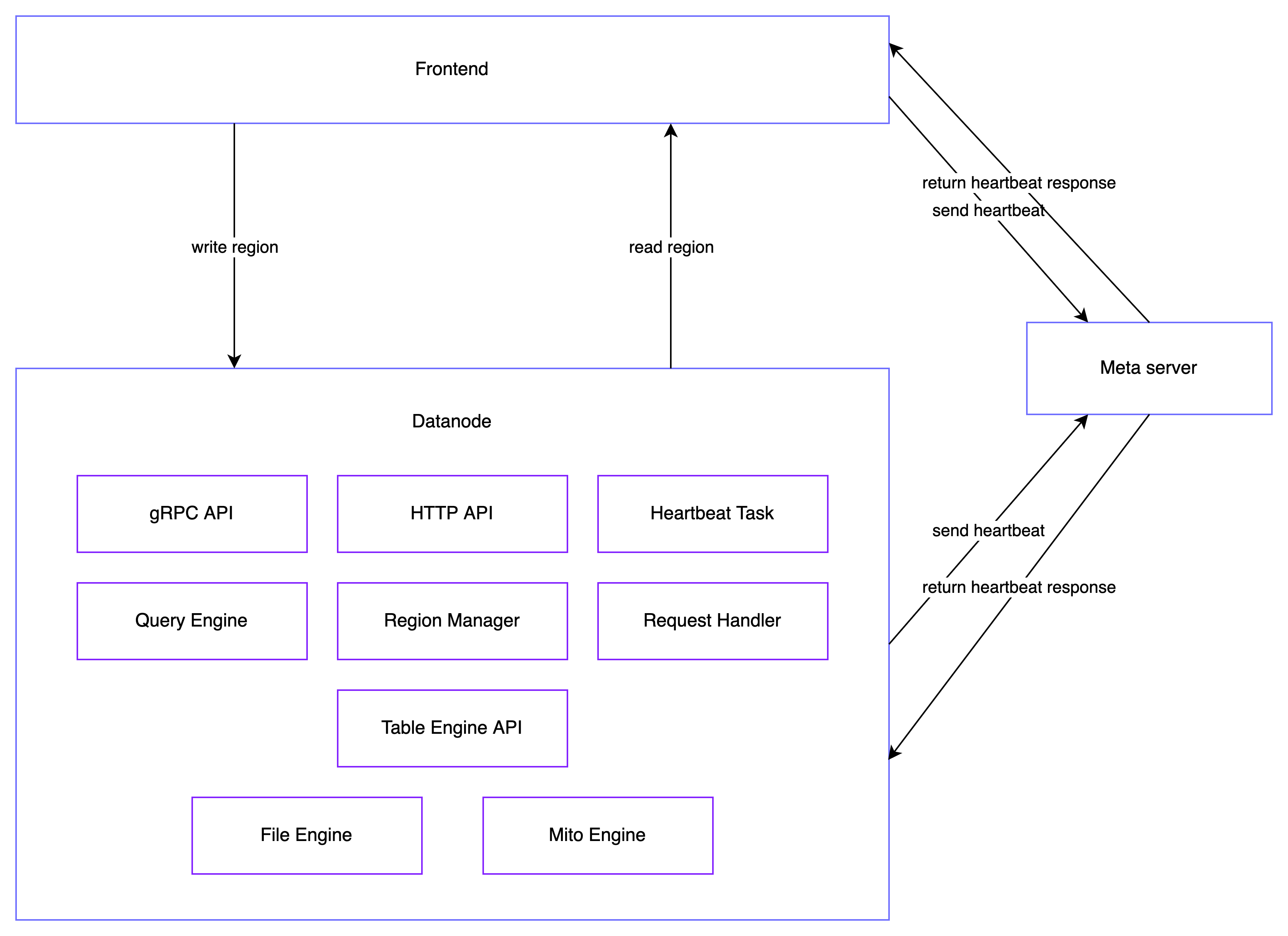Overview
Introduction
Datanode is mainly responsible for storing the actual data for GreptimeDB. Datanode itself is a stand-alone database service. Meanwhile, it could cooperate with Frontend and Metasrv to form a distributed database service, as the following picture shows:

Components
A Datanode contains many components needed to build up a database system. Here we list most of these components (some are in progress):
- A gRPC service provides read/write access to the data managed by this node.
Frontendalso uses the RPC service to interact withDatanodes. - An HTTP service implements the HTTP protocol of other TSDBs or databases, and for debugging purposes.
Metaclient interacts with theMetasrv.- Handlers contain the actual processing logic for RPC/HTTP requests.
- Catalog manages the metadata of the database objects, such as tables, and views in this node.
- Resource management controls the usage of memory, CPU, and disk.
- Physical planner, optimizer, and executor are for executing queries from the
Frontend.Datanodealso contains components not shown in the picture, such as logical planner, and logical optimizer, which can only be invoked in stand-alone mode. - Table engine implements the table model based on the storage engine. Note that
Datanodeis designed to support multiple table engines, though currently, only one table engine has been implemented. - Storage engine consists of many sub-components:
- WAL
- Memtable
- Cache
- SST
- ...
- Abstraction layer is for log and object store services. We use the log service to implement WAL.
